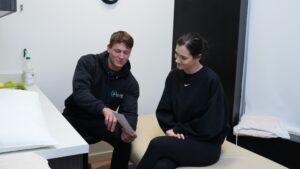
Living with chronic pain or recurring conditions can have a huge impact on your quality of life—it can decrease your mobility, get in the way of you doing your hobbies or even otherwise daily activities. In some cases, it can even interfere with your relationships with your loved ones by making you irritable and moody.
Pain from sports injuries or conditions that affect your tissues or joints can be debilitating, and often can’t be resolved by just medication, leading many people to believe that their only option is surgery. Fortunately, there is another option—a non-invasive and non-surgical option—called shockwave therapy.
What is Shockwave Therapy?
The term shockwave therapy might sound worrisome, but it is a safe and effective way to treat your tendons, muscles, and joints to relieve pain and restore your mobility. It is a treatment modality used in orthopedics, physiotherapy, sports medicine, and more to speed up recovery and treat chronic pain. It is also called extracorporeal shock wave therapy (ESWT).
Shockwave therapy uses a set of acoustic pulsations that are directly applied to painful spots. These shockwaves stimulate the natural healing processes of the body and promote regeneration and repair of tissues, tendons, and muscles. Shockwave therapy is often used for stubborn chronic conditions involving connective tissues like ligaments and tendons.
Frequently Asked Questions About Shockwave Therapy
Shockwave therapy was first introduced in clinical practice in 1982, after which it was quickly approved to treat a variety of conditions. As a reasonably new medical treatment, however, many people still have several questions. At Synergy Rehab, we aim to help answer those questions.
How Does Shockwave Therapy Work?
Shockwave therapy involves the application of energy directly to the skin through acoustic waves using a gel medium. These waves use much lower energy than other medical applications, but they can have quick changes in pressure, as well as high amplitude with non-periodic signals. The applicator transfers this energy (which is created by compressed air) to the transmitter at the end into the body tissue.
To start with, the area to be treated is precisely located through a physical examination, after which the gel will be applied. The shockwave applicator will then be gently pressed against the area to start the treatment.

What Are the Effects of Shockwave Therapy?
The main effects of shockwave therapy are accelerated tissue repair, increased cell growth, pain relief, and mobility restoration. This is done by:
- Stimulating blood vessel formation and collagen production. The acoustic waves create micro-ruptures in the bone and tendon capillaries which create the blood flow necessary to start the repair process. Similarly, shockwave therapy boosts collagen production, which helps strengthen the tendons.
- Reducing inflammation. Chronic inflammation has many causes, but they all result in pain. Shockwave therapy helps increase the activity of mast cells, which play a key role in resolving the inflammatory response.
- Targeted pain relief. One of the ways pain travels through the body is through a neurotransmitter called Substance P that relays pain signals to the central nervous system. The waves from shockwave therapy can disperse the concentration of Substance P, which results in reduced pain.
- Breaking down calcium buildup. Calcium buildup, also called calcification, usually occurs as a result of trauma to a tendon. Shockwave therapy starts the process of biochemical decalcification to treat the tendon.
- Deactivating trigger points. Trigger points are specific spots in the musculoskeletal system that cause pain when it experiences any compression or contractions. Trigger points are a result of the buildup of waste products that irritate the nerve endings. The process of decalcification due to the acoustic shockwaves also helps the breakdown of these waste products, which releases the trigger points.
What Conditions Can It Treat?
Shockwave therapy is primarily used to treat common musculoskeletal conditions as well as various areas of tendinopathy. These conditions include:
- Jumper’s Knee (Patellar Tendonitis)
- Tennis Elbow
- Rotator Cuff Tendinopathy
- Achilles Tendinopathy
- Medial Tibial Stress Syndrome (Shin-Splint Syndrome)
- Heel Spur
- Hip Pain
Does Shockwave Therapy Hurt?
Shockwave therapy is a non-invasive and non-surgical procedure, but some patients can experience discomfort depending on the level of pain they are in due to their condition. Most patients report feeling small pulses against their skin, but you can always let your specialist know if the pain or discomfort is too much.
Each shockwave session also only lasts around five minutes, so any pain or discomfort doesn’t last long.
How Many Treatments Do I Need?
The number of treatments depends on two factors—your current condition and the level of response to the treatment. You will typically need three to five treatments. However, you will likely feel some sort of relief after the first treatment.
The treatments will usually be administered anywhere between three to ten days apart, depending on the patient’s tissue response and pain tolerance.
Does Shockwave Therapy Have Any Side Effects?
You can return to your daily activities once the treatment is over, but it is recommended to refrain from any high-impact physical activity, especially if it involves the treated region. You may feel soreness, redness, discomfort, or swelling in the days following your treatment, for which you can take paracetamol but avoid NSAIDs like ibuprofen as they can counteract the treatment.
If you or a loved one suffers from pain, know that there are several options to manage it. To learn more about shockwave therapy, or other forms of pain relief, reach out to Synergy Rehab! You can find us at any one of our nine locations across British Columbia. You can also contact us online, book an appointment, or call us at +1-604-503-1688 to get started on your pain relief journey.







